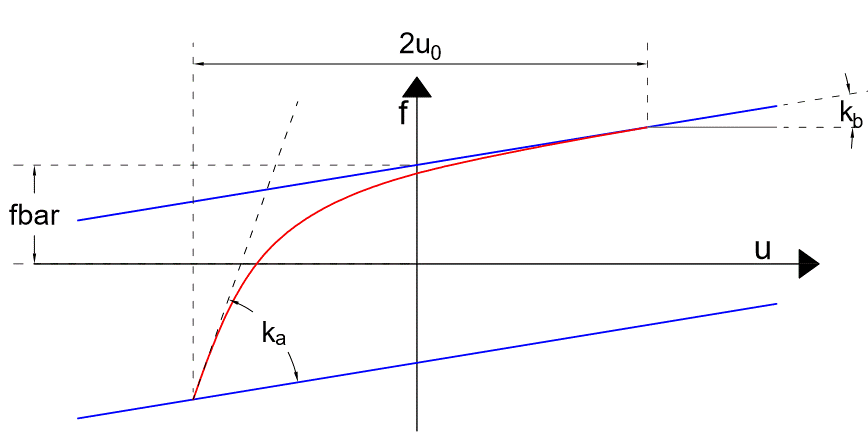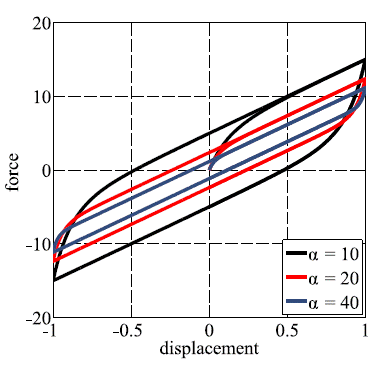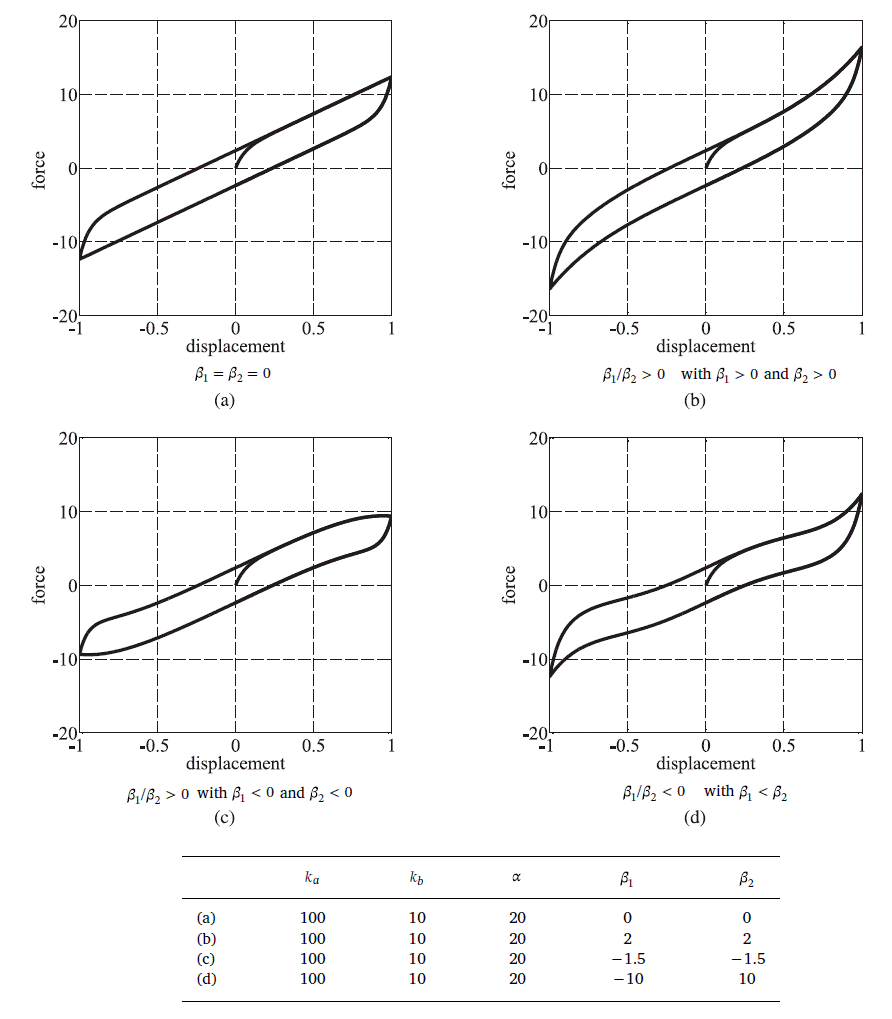3.1.6.24. HystereticPoly Material
This command is used to construct the uniaxial HystereticPoly material producing smooth hysteretic loops and local maxima/minima. It is based on a polynomial formulation of its tangent stiffness.
- uniaxialMaterial HystereticPoly $matTag $ka $kb $alpha $beta1 $beta2 <$delta>
Argument |
Type |
Description |
|---|---|---|
$matTag |
integer |
integer tag identifying material. |
$ka |
float |
Tangent stiffness of the initial “elastic” part of the loop. |
$kb |
float |
Tangent stiffness of the asymptotic part of the loop. |
$alpha |
float |
Parameter governing the amplitude of the loop. |
$beta1 |
float |
Parameter governing the shape of the asymptotic region of the loop. |
$beta2 |
float |
Parameter governing the shape of the asymptotic region of the loop. |
$delta |
float |
Asymptotic tolerance (optional. Default 1.0e-20). |
Note
Determination of constitutive parameters is quite intuitive and is reported below, although, their identification can be performed by the strategy formulated in [SessaEtAl2020] implemented in the freeware available here.
The original formulation of HystereticPoly is reported in [VaianaEtAl2019]. Minor changes have been made in its implementation for OpenSees and make reference to the enhanced formulation reported in [SessaEtAl2022] and [Sessa2022].
The model may reproduce either force-displacement or stress-strain relationships. It is formulated by means of two asymptotic lines (blue) linked by transition curves (red):

Parameter $alpha governs the transition between such curves so that:
\(u_0=\frac{1}{2}\left[\left(\frac{k_a-k_b}{\delta}\right)^{1/\alpha}-1\right]\)
\(\bar{f}=\frac{k_a-k_b}{2}\left[\frac{\left(1+2u_0\right)^{1-\alpha}-1}{1-\alpha}\right]\)
Where \(\bar{f}\) is the value at which the asymptotic line crosses the vertical axis and \(2u_0\) is the generalized displacement for which the transition curve reaches the asymptotic line.
In general, $alpha= \(\alpha\) influences the amplitude of the loop:

while parameters $beta1 and $beta2 modify the shape of the loop:

Example
The following constructs a HystereticPoly material with tag 1, parameters corresponding to line (d) of the table above and tolerance $delta = \(10^{-20}\).
Tcl Code
uniaxialMaterial HystereticPoly 1 100.0 10.0 20.0 -10.0 10.0 1.0e-20
Python Code
uniaxialMaterial('HystereticPoly', 1, 100.0, 10.0, 20.0, -10.0, 10.0, 1.0e-20)
Code Developed by: Salvatore Sessa, University of Naples Federico II, Italy
Vaiana, N., Sessa, S., Marmo, F. and Rosati, L. (2019). “An accurate and computationally efficient uniaxial phenomenological model for steel and fiber reinforced elastomeric bearings.” Composite Structures, 211: 196-212. DOI: https://doi.org/10.1016/j.compstruct.2018.12.017
Sessa, S., Vaiana, N., Paradiso, M. and Rosati, L. (2020). “An inverse identification strategy for the mechanical parameters of a phenomenological hysteretic constitutive model.”, Mechanical Systems and Signal Processing, 139: 106622. DOI: https://doi.org/10.1016/j.ymssp.2020.106622
Sessa, S., Vaiana, N., Paradiso, M. and Rosati, L. (2022). “Thermodynamic Compatibility of the HystereticPoly Uniaxial Material Implemented in OpenSees.”, Advanced Structured Materials, 175: 565 - 580. DOI: https://doi.org/10.1007/978-3-031-04548-6_27
Sessa, S. (2022). “Thermodynamic compatibility conditions of a new class of hysteretic materials.”, Continuum Mechanics and Thermodynamics, 34(1): 61 - 79. DOI: https://doi.org/10.1007/s00161-021-01044-w